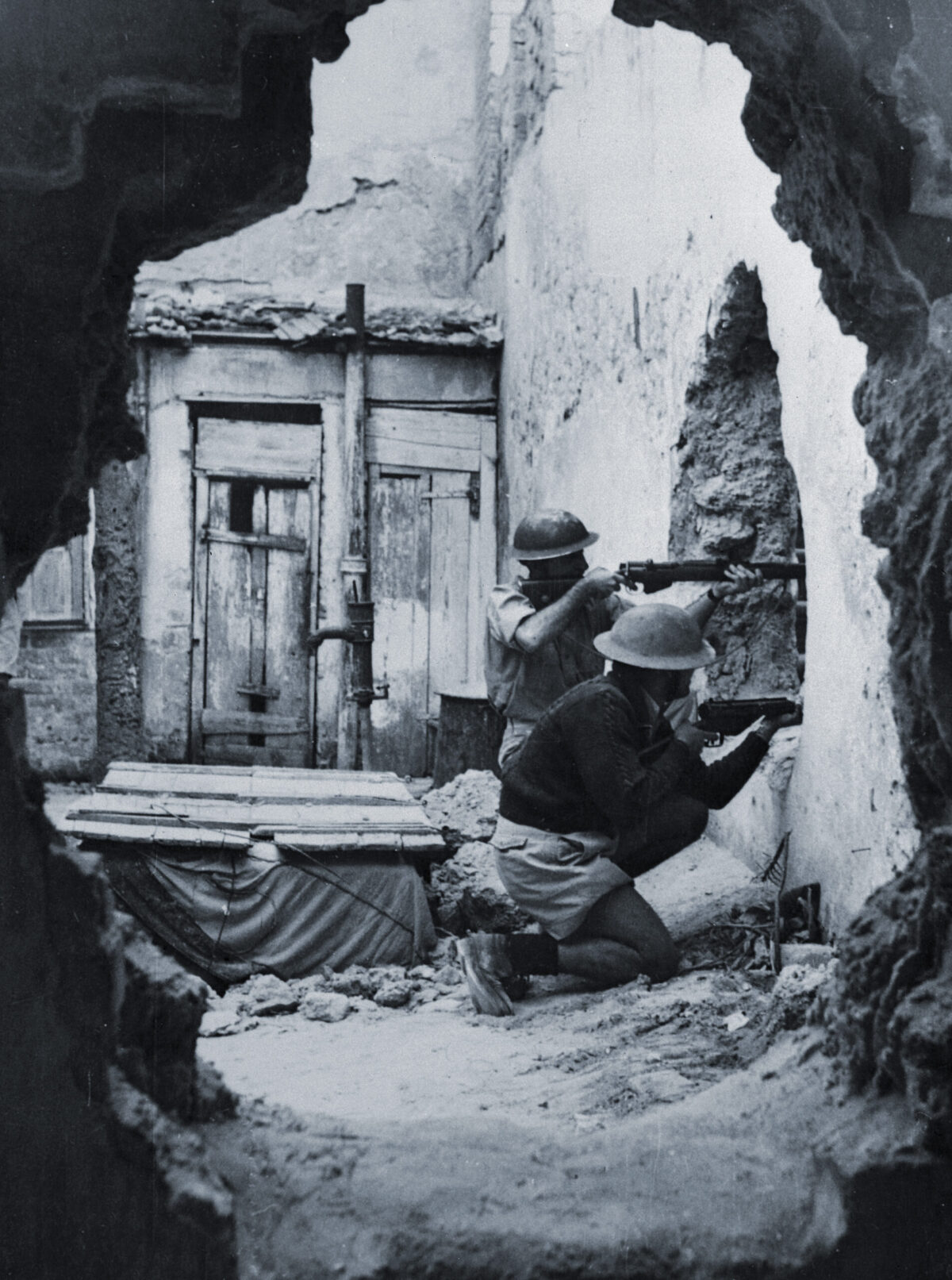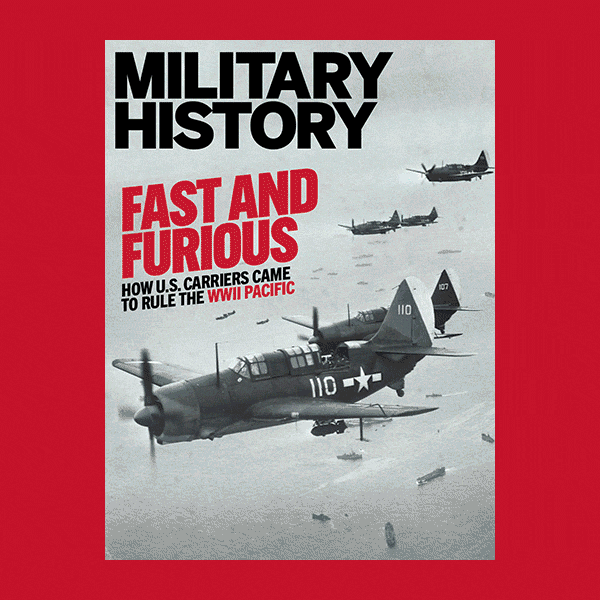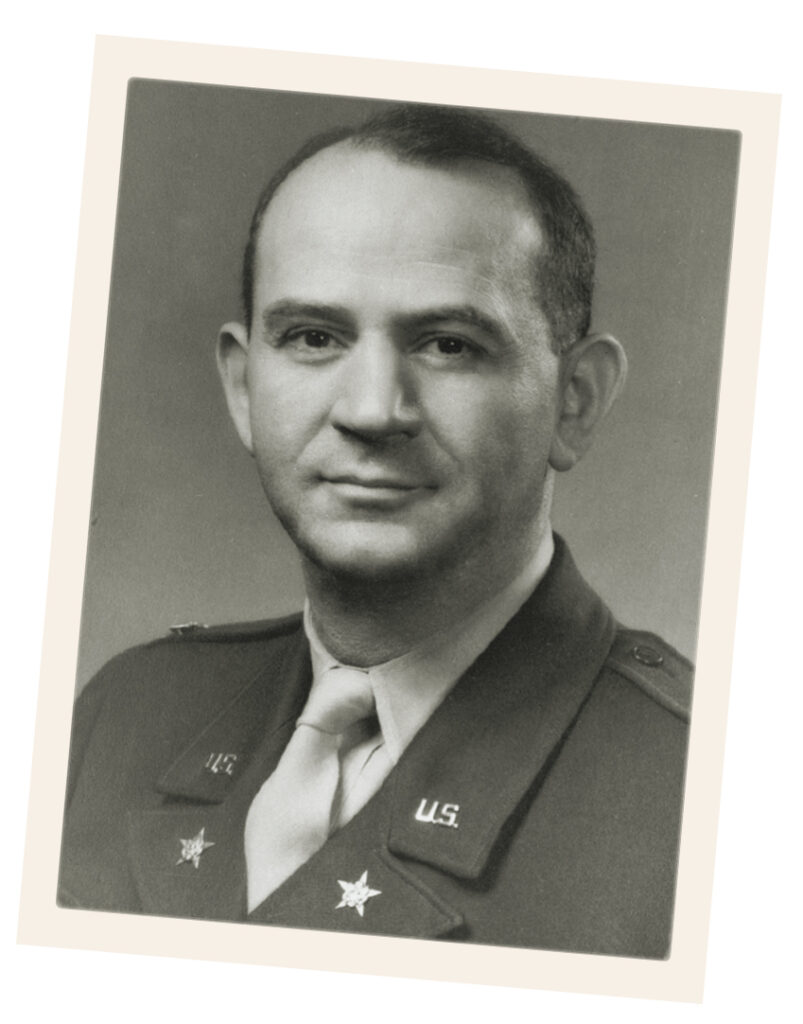
Mickey Marcus was a larger-than-life personality in both the U.S. Army during World War II and the Israel Defense Forces (IDF) during the 1948 Arab-Israeli War, memorialized by Israel as its War of Independence. He was one of a handful of U.S. Military Academy graduates killed while fighting under a foreign flag and the only such graduate buried in the post cemetery at West Point. That alone makes him unique in history. But Marcus is also duly recognized as a key player in the birth of the IDF—its organization, structure and fighting doctrine. Indeed, he was directly responsible for the IDF’s key strategic victory on the Jerusalem front in 1948.
Some of his story is familiar to the public, thanks to the 1966 war film Cast a Giant Shadow, in which actor Kirk Douglas portrayed Marcus. But the truth of the American officer’s remarkable role in the early military history of Israel was known to very few.
Born in Brooklyn, N.Y., on Feb. 22, 1901, David Daniel Marcus (aka “Mick” or “Mickey”) was a first-generation American, his parents having emigrated from Romania. As if being poor and Jewish in inner city New York weren’t challenge enough, his early life was further complicated in 1910 when his father died. By then, however, 9-year-old Mickey was a self-described “tough street kid” who learned to box to defend himself against local bullies. His pugilistic prowess in turn helped him win an appointment to West Point and, as a cadet, made him a standout intercollegiate welterweight.
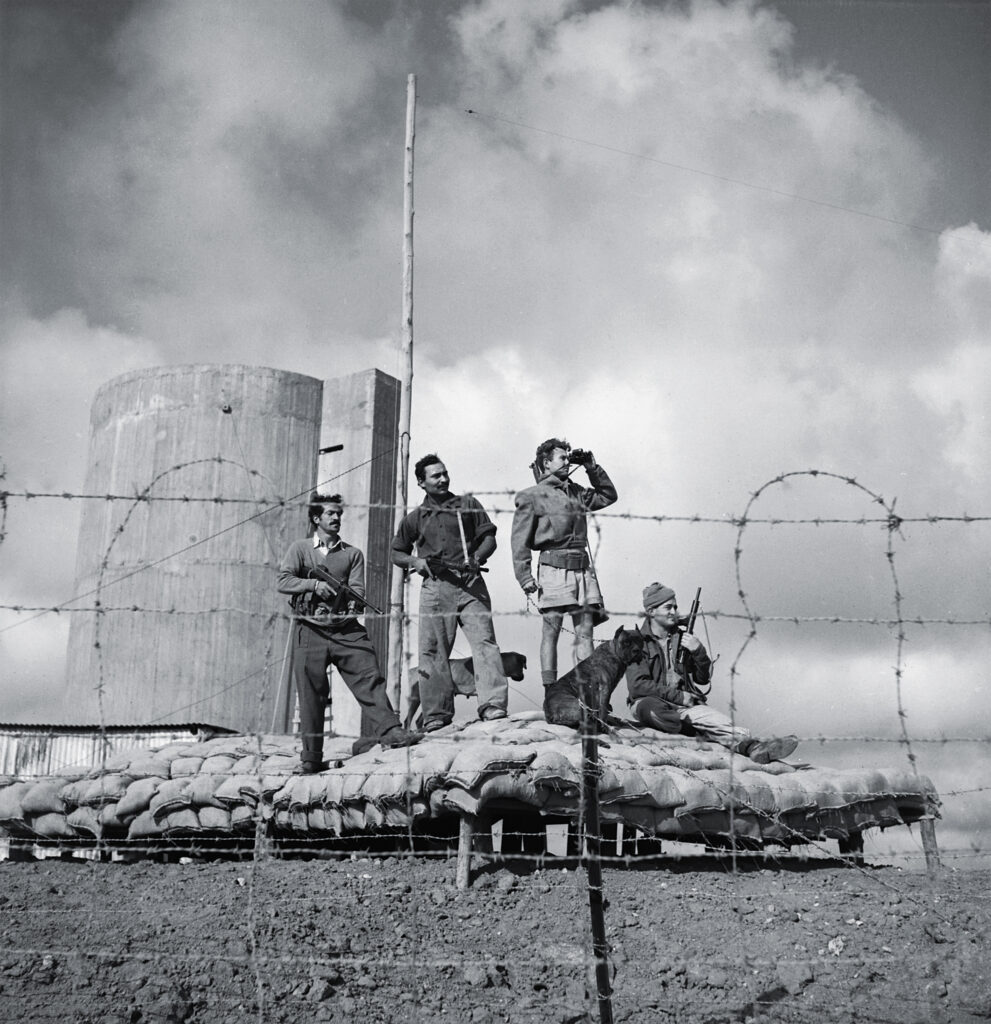
On graduation in 1924 2nd Lt. Marcus reported for duty at Fort Jay on Governor’s Island, N.Y. Before long he decided he’d rather be a lawyer and resigned his Regular Army commission. Working by day and taking classes at Brooklyn Law School at night, he earned his law degree in 1928. Marcus then launched his law career in Manhattan.
Ten years later, with the September 1939 outbreak of war in Europe, Marcus resolved to resurrect his military career. He’d remained in the Army Reserve after leaving active duty, which enabled him to apply for a transfer to the New York National Guard. He was a lieutenant colonel and the top military advocate in the National Guard’s 27th Infantry Division when that unit was activated for federal service on Oct. 15, 1940.
Marcus proved such a talented staff officer that after the 27th deployed to Hawaii in April 1942, he was put in charge of the division’s Ranger Combat Training School. Few units had a formal program for Ranger-type training that early in the war, but Mickey soon demonstrated its merits and his worth. A year later, when he left Hawaii for an assignment in Washington, D.C., his division commander, Maj. Gen. Ralph C. Smith, lauded his achievements in a prescient letter. “You have shown,” Smith wrote, “that you know the business of soldiering and tactical leading of troops.”
Five years later, when Marcus was putting together a training regimen for the newly established IDF, his Ranger combat training experience paid dividends. Marcus also gained valuable operational and strategic experience in his next stint as a planner in the War Department’s Civil Affairs Division in 1943. He was on the ground in France during the early days of the June 1944 invasion, thereby acquiring firsthand experience with both small-unit tactics and large-scale military operations. All of his wartime experiences proved critical to his success on the battlefield in 1948.
In the postwar period Colonel Marcus established the Army’s War Crimes Branch and recruited hundreds of judges, prosecutors and lawyers for the trials conducted in Nuremberg, Germany, between 1946 and ’49. His future in the Army could not have been brighter, but Marcus missed New York. Leaving active duty, he returned to private law practice in Manhattan. But not for long.
In November 1947 the United Nations adopted the plan that would divide British-controlled Mandatory Palestine into a Jewish state and an Arab state. The idea was that when the British Mandate for Palestine formally ended the following year, a nation-state—Israel—would be established as a homeland for the Jewish people.
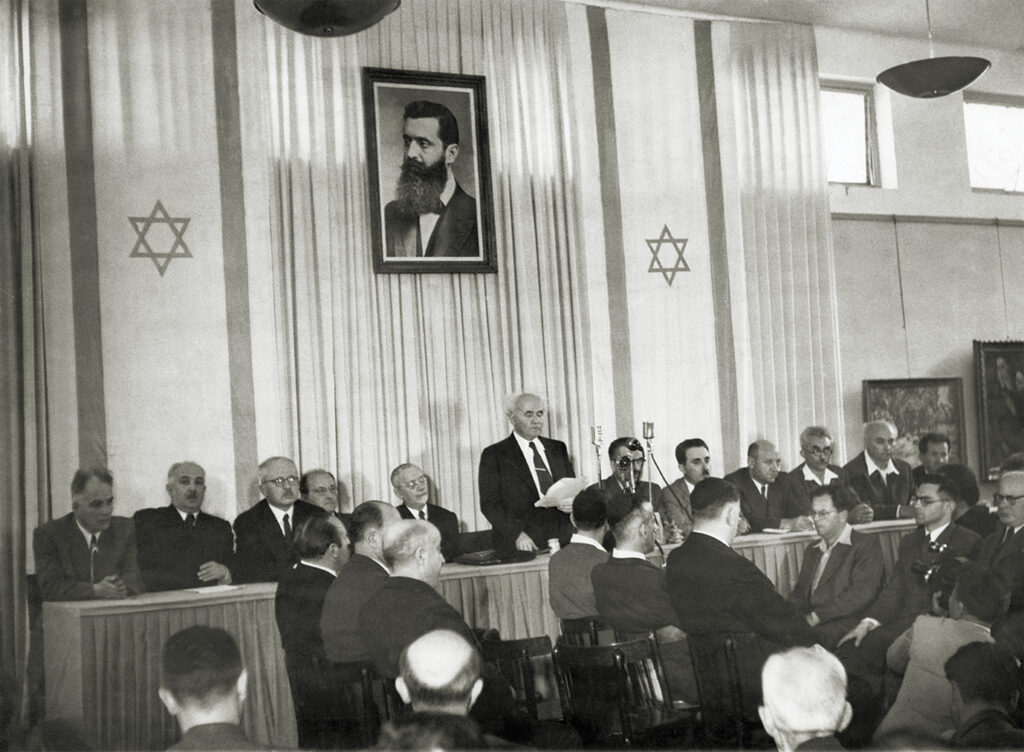
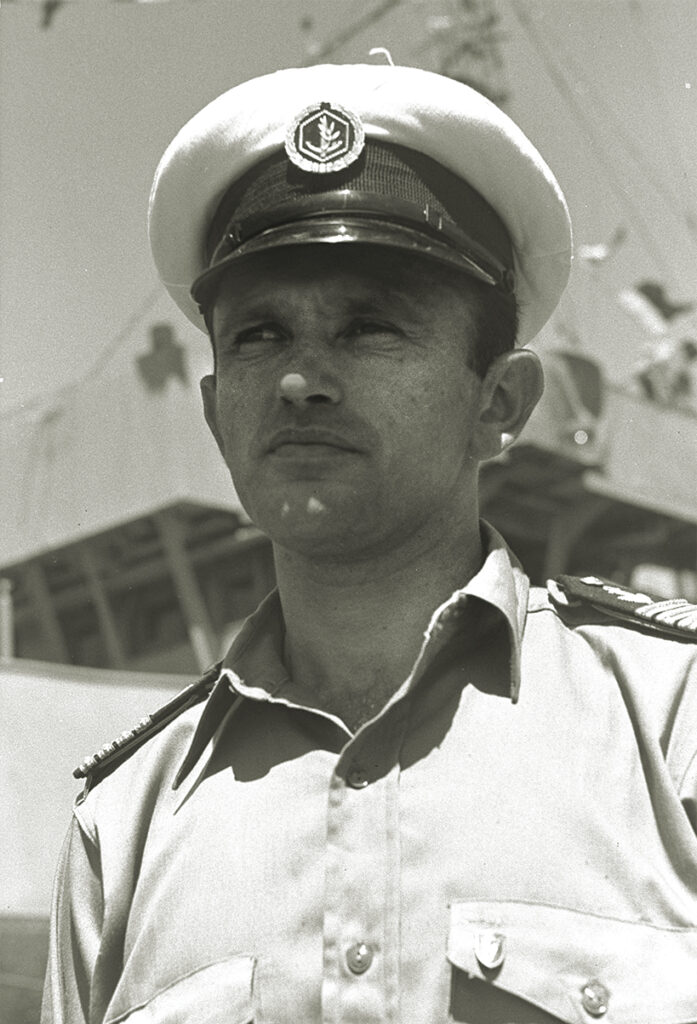
The Arabs in Palestine and surrounding countries not only rejected this proposal, but also made it clear they would use armed force to destroy any such Jewish state. Amid those discussions, David Ben-Gurion, the key leader in the Jewish community in Palestine, sent trusted colleague Shlomo Shamir to the United States. Shamir’s mission was to find an American general officer willing to come to Palestine and organize the existing Jewish irregular militias into a professional army able to defend the new Jewish state of Israel. Shamir was a member of Haganah (Hebrew for “The Defense”), the main paramilitary group tasked with defending Jewish settlements in Palestine against Arab attack. Shamir had served as a major in Britain’s Royal Air Force during the war, thus he had the background to find an American with the required military skills.
On arriving in Manhattan, Shamir sought out Marcus, but only because he thought the noted Jewish-American veteran might know a qualified candidate. Ultimately, however, Shamir realized Mickey himself was the man for the job. Marcus agreed. Federal authorities signed off on his involvement, provided Marcus kept secret his military record and identity. Consequently, Marcus arrived in Tel Aviv in January 1948 under the pseudonym Michael Stone.
During his first trip to Palestine Marcus visited many Haganah units and other paramilitary forces. He spent a great deal of time with the 260 cadets in the Haganah platoon commanders’ course. Focusing on tactics, the course was run by Haim Laskov, who had joined Haganah as a teen and gained invaluable combat experience as a British army officer on the Italian front.
The chief goal of Laskov’s course was to train each cadet to command an infantry platoon, both independently and as part of a company. While Marcus was impressed with Laskov’s regimen, he realized the need for a similar course for higher-level commanders. Tactics were important, but the new Israeli military could not win on the battlefield unless it had officers conversant with the operational level of war. Consequently, when Marcus submitted his official report to Ben-Gurion on March 2, 1948, his chief recommendation was the immediate creation of a four-week course for battalion-level commanders. Since no such course had ever existed in the Haganah or other Jewish paramilitary groups, Ben-Gurion placed Marcus in command of the new school and tasked him with developing a lesson plan.
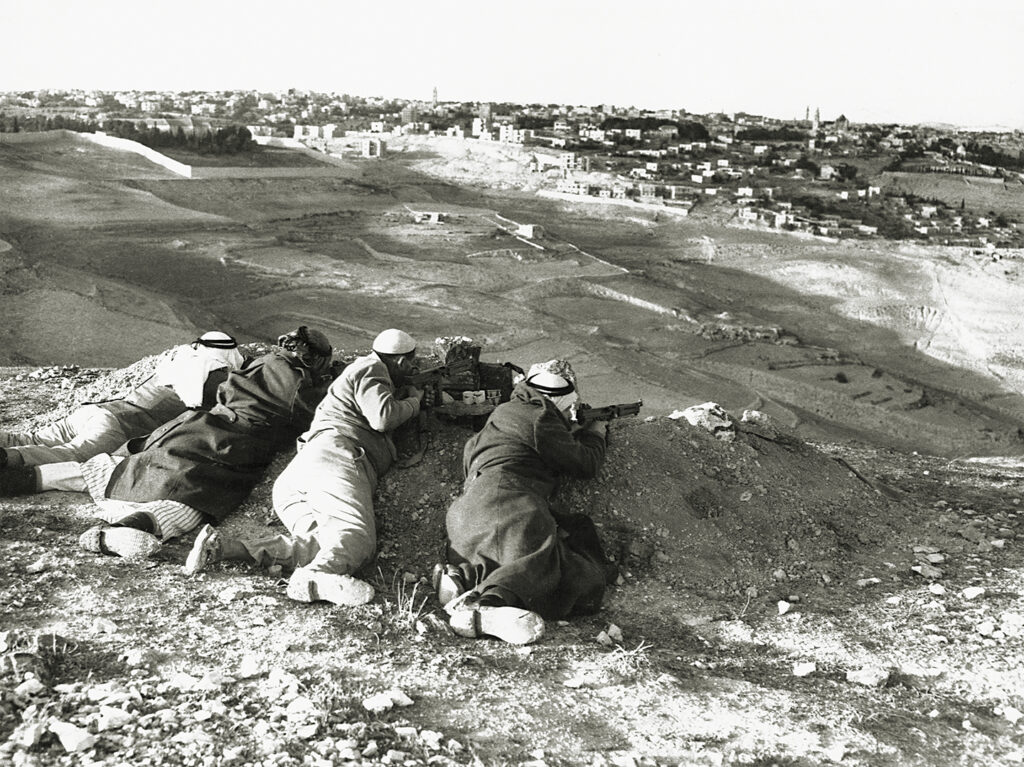
Relying mostly on memory from his experiences in the 27th Division in Hawaii and as a War Department planner in the Pentagon, Marcus wrote two books—one covering battalion staff work, the other a tactical field manual. The theme in both books was that a blend of doctrine and improvisation (a trait prized by those serving in Jewish paramilitary units) was the key to combat success at the tactical and operational levels of war.
Marcus also drafted a memorandum for Ben-Gurion recommending the creation of a defense ministry and a robust command structure for the new Jewish defense force. Tactics and operations were important, but only as part of an overall military strategy—and success at the strategic level of war could only be achieved with a general staff and higher command structure. Having served as a staff officer at the division, corps and higher levels of the U.S. Army, Marcus was the only person among the Jewish planning staff with experience at all three levels of war—tactical, operational and strategic.
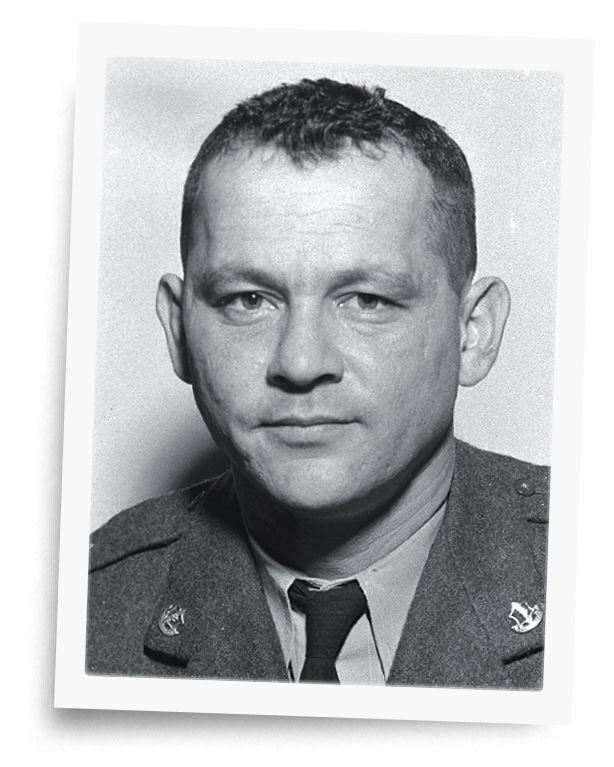
After laying the foundation for what would become the IDF, Marcus returned Stateside in April 1948. In the weeks that followed, he kept in contact with Jewish leaders in Palestine and the Haganah. Consequently, Marcus knew that the minute the British Mandate for Palestine formally expired at midnight on May 14, 1948, Ben-Gurion would proclaim the birth of Israel.
Anticipating he would be needed sooner rather than later, Marcus returned to Palestine on May 2. He was on the ground that May 15 when, in direct response to Ben-Gurion’s declaration of independence, the armies of Egypt, Transjordan, Syria and Iraq invaded Israel. Initially totaling some 36,000 troops, the invaders took control of Arab areas in Palestine and then began attacking Jewish settlements with the goal of eliminating the new Israeli state. They also attacked units in the IDF, the new name bestowed on Jewish military units by Ben-Gurion on May 26.
Within a matter of days Jewish military forces were in dire straits on the southern front in the Negev. After Marcus arrived and put together a defense, however, the IDF managed to sever the supply lines of the invading Egyptians and stabilize the front.
Meanwhile, operations on the Jerusalem front had taken a downturn. After a few days of heavy fighting, just when it seemed Jewish forces were gaining the upper hand, King Abdullah of Jordan ordered the Arab Legion, Transjordan’s armed force, to enter Jerusalem on May 17. The officers of the Arab Legion were mostly British, and the overall commander was John Bagot Glubb, a British lieutenant general. Seizing the Jewish Quarter of the Old City (present-day East Jerusalem), Jordanian forces expelled some 1,500 Jewish civilians and imprisoned the rest.
At the time greater Jerusalem was home to some 100,000 Jewish residents. As the city was at the heart of territory under Arab control, that was a real concern, even more so after Arab forces blocked access to the city by seizing the fortified Latrun police station, which straddled the major highway from Tel Aviv to Jerusalem. Jewish leaders in Jerusalem bombarded Ben-Gurion with telegrams, warning they were desperate for food and water and could not hold out for more than a few weeks.
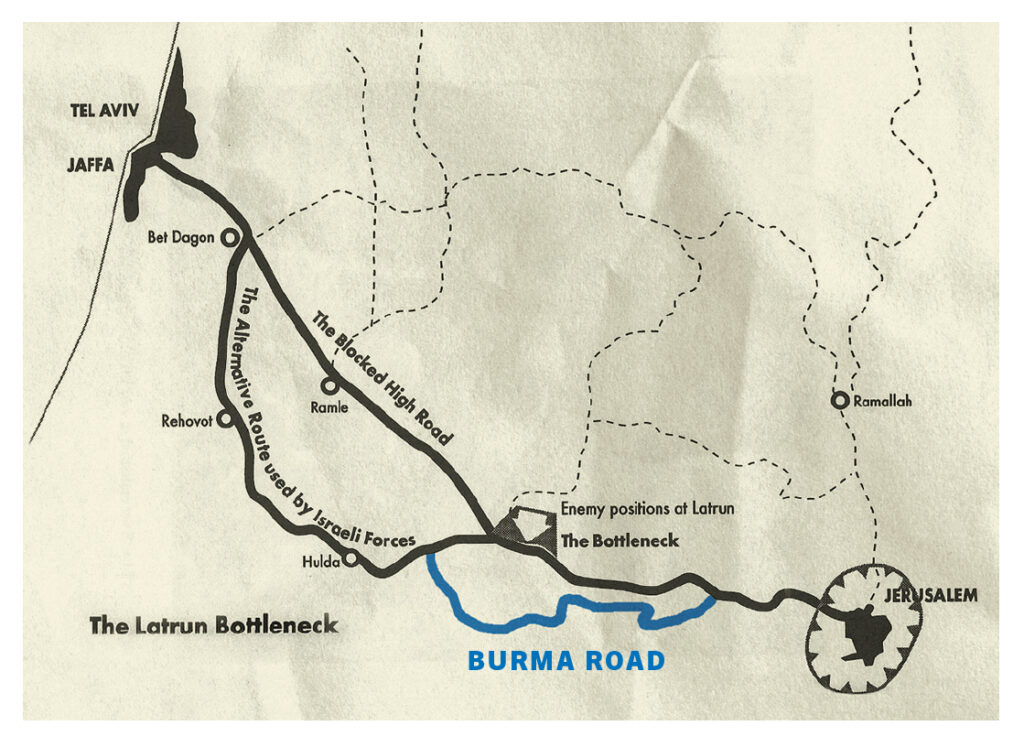
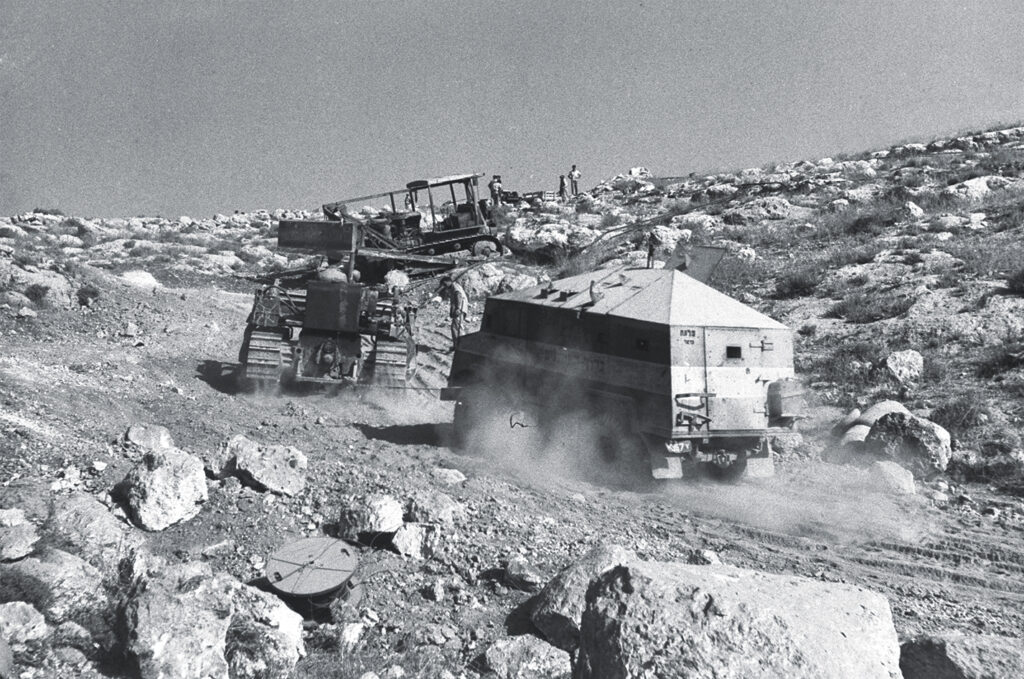
Resolving to break the impasse, Ben-Gurion ordered IDF units to capture Latrun and open the road to Jerusalem. However, Operation Bin Nun Alef, launched after midnight on May 25, fell apart in the wake of a determined Jordanian defense. Faced with an increasingly dire situation in Jerusalem, Ben-Gurion appointed Marcus commander of the Jerusalem front, tasked with opening a supply route to Jerusalem’s Jewish inhabitants and then possibly capturing the Old City itself.
In recognition of Marcus’ role in the IDF, Ben-Gurion announced the American’s promotion to the rank of aluf. A Biblical Hebrew term meaning “head of tribe,” it is equivalent to the rank of “general” in other militaries, subordinate only to the IDF chief of staff. It was an especially high honor, considering Marcus was the first modern-day officer granted the rank.
On May 28 Aluf Marcus took overall command of four brigades on the Jerusalem front—the 6th Etzioni, the 7th Armored, the 10th Palmach Harel and the 11th Yiftach. Two days later he launched Operation Bin Nun Bet. The goal was to capture the police station and monastery at Latrun, both of which were in Jordanian hands and overlooked the road to Jerusalem.
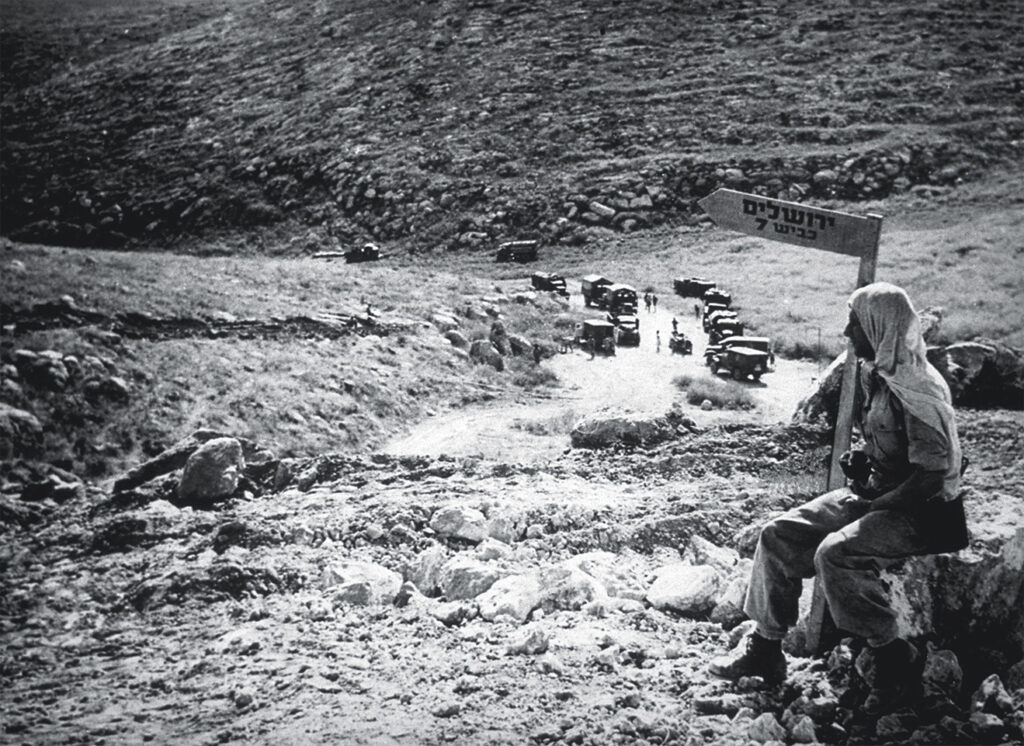
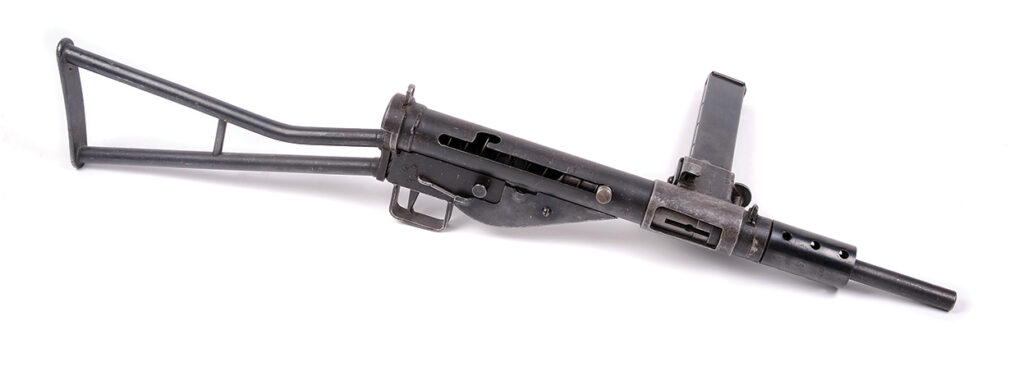
The IDF’s 73rd Mechanized Battalion, comprising light infantry on half-tracks and locally made armored vehicles, attacked the Jordanians but retreated in the face of heavy losses, including the death of a company commander. By day’s end on May 31 it was clear Bin Nun Bet had failed, the 73rd alone suffering 50 percent casualties. But while the Israelis had suffered a tactical defeat, they had managed to pin the Jordanians in place and put them on the defensive. Thus while the road to Jerusalem remained blocked, the Jordanians were unable to conduct any offensive operations.
Cast a Giant Shadow
In 1966 United Artists released the biopic Cast a Giant Shadow, starring Kirk Douglas as Mickey Marcus and co-starring John Wayne, Yul Brenner, Frank Sinatra, Senta Berger and Angie Dickinson. Directed by Melville Shavelson, the film focuses on Marcus’ experiences as an officer in the U.S. Army during World War II and in the IDF during the 1948 Arab-Israeli War. It casts the aluf as a “man of action,” with marketing centered on the motto “Everywhere he lived and fought—he cast a giant shadow.” While not always historically accurate, the film captures the Zeitgeist of the era and is faithful in its presentation of Marcus’ unique talents.
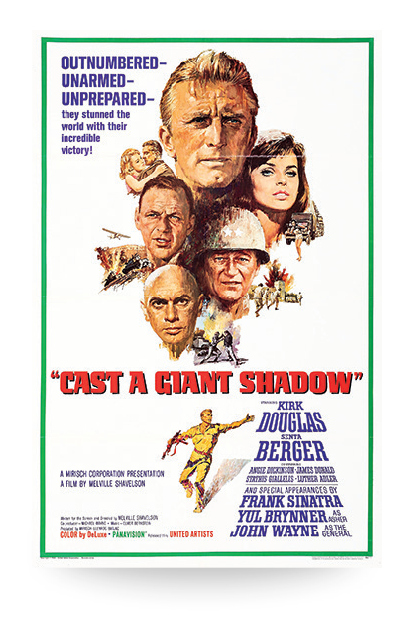
That said, the atmosphere at IDF headquarters was gloomy at best, Ben-Gurion conceding as likely the Arab Legion would not only capture all of Jerusalem but also exploit the momentum from its success at Latrun to capture more land or advance farther west toward the coast. On Marcus’ recommendation, IDF military operations shifted to twin efforts to lift the siege of Jerusalem—the Burma Road and Operation Yoram.
Recognizing that as long as the Jordanians held Latrun, it was impossible to use the existing highway to Jerusalem, the IDF decided to construct an entirely new road. A patrol had previously discovered a footpath in the hills south of the main road, one linking several villages. Were it sufficiently enlarged and improved, it might provide a new route to Jerusalem, altogether bypassing the Arab Legion forces holding Latrun.
On the night of May 29–30 IDF vehicles sent into the hills confirmed the bypass road could support motor vehicles, and IDF engineers fired up bulldozers to forge what was christened the “Burma Road,” after the famous supply road built to link Burma and China during World War II. Late to realize the IDF was building a bypass, the Jordanians attempted to prevent its completion, but to no avail. On June 19 a convoy of 140 trucks carrying food, sugar and other supplies, as well as weapons and ammunition, successfully drove the length of the Burma Road into Jerusalem.
On June 8, as the Burma Road was under construction, the IDF launched Operation Yoram, again seeking to capture Latrun and end the Jordanian blockade of the main road to Jerusalem. On Marcus’ recommendation, Ben-Gurion withdrew the 11th Yiftach from Galilee to launch this third attack on Latrun. The primary target was Hill 346, high ground between the two Arab Legion battalions. The well-conceived plan reflected Marcus’ battlefield experience. Unfortunately for the planners, however, IDF units tasked with the mission took a wrong turn and mistakenly attacked Hill 315.
After the failure of Yoram, units on the Jerusalem front no longer had the wherewithal to mount a successful attack on Latrun. As it turned out, they wouldn’t need to, for the pinned-down Arab Legion lost the initiative, while construction of the Burma Road ultimately broke the siege of Jerusalem. Much of the credit belongs to Marcus.
On June 9 Marcus and his aide-de-camp drove up the Burma Road to Jerusalem to assess the situation there. As an Arab Legion counterattack was expected at any time, he instructed the guards at camp to be on full alert. Returning the next night, Marcus promptly went to sleep. In the predawn darkness of June 10, around 3:30 a.m., Marcus rose to the call of nature and emerged from his tent. As it was cold, he wrapped a white wool blanket around his shoulders and walked to a nearby grove of trees.
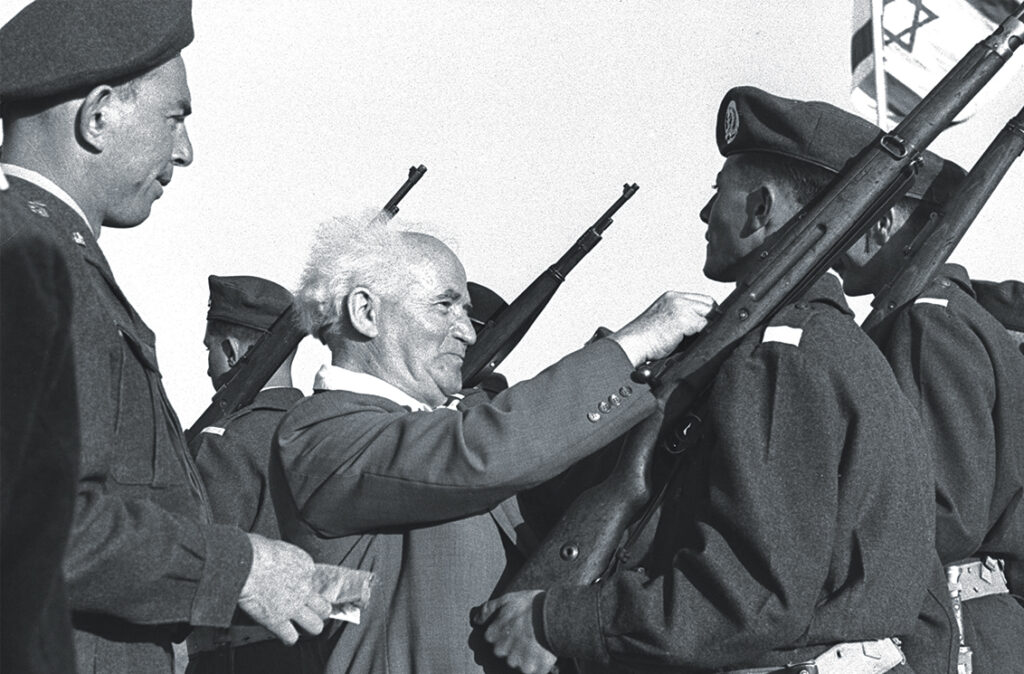
As Marcus returned to his tent, camp sentry Eliezer Linsky heard a noise and looked up to see a white-robed figure approaching through the gloom. Linsky called out in Hebrew, ordering the figure to stop. Marcus, who didn’t speak Hebrew, kept walking. Linsky then fired a warning shot, which Marcus answered with some choice mumblings in English. Thinking the unidentified man might be an English-speaking officer of the Arab Legion or perhaps a disguised Arab seeking to infiltrate the camp, Linsky fired three rounds at Marcus. One struck him in the chest, killing him instantly. Marcus was only 47 years old.
In coming days an honor guard escorted his body to Jerusalem’s Bezalel National Museum, where it was draped in an Israeli flag, pending transport. An investigation found Linsky had acted in accordance with his orders as a sentry and was not to blame for the tragic death of Aluf Marcus.
Flown back to the United States, Marcus was interred with military honors in the post cemetery at West Point. His marker memorializes him as A Soldier for All Humanity.
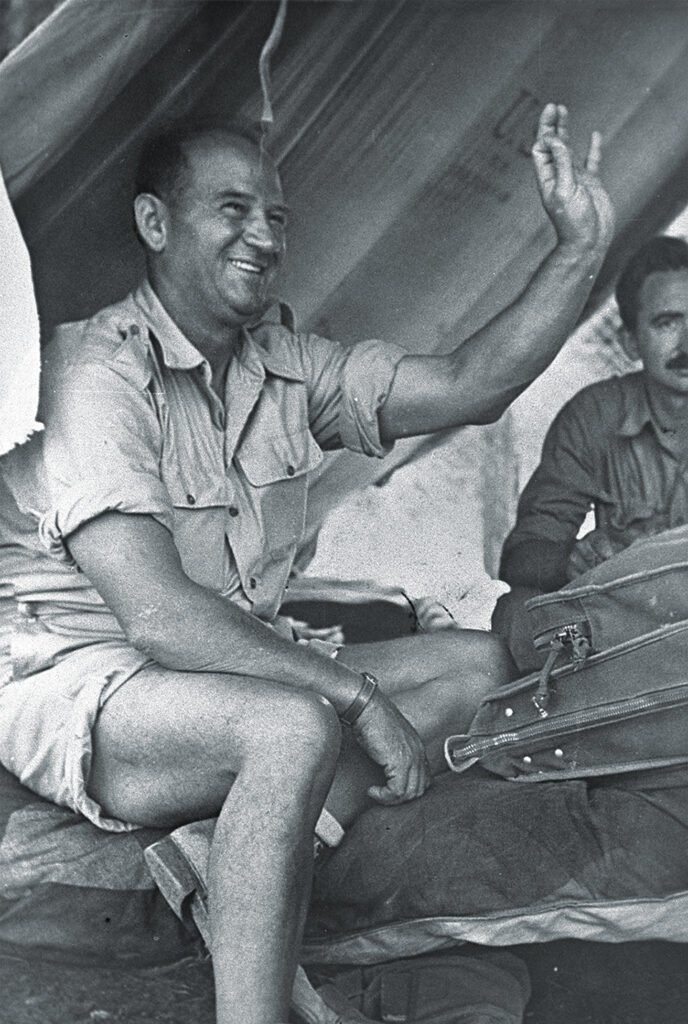
It’s no exaggeration to state that no single officer did more for the IDF during the 1948 Arab-Israeli War than Marcus. While many resident Jews in Palestine knew how to fight and were proficient at small-unit tactics, only Marcus had the skills to organize and train an army for success at the operational and strategic levels of war. His time as a staff officer at the 27th Infantry Division in Hawaii (1942–43), his work as a planning officer in the Pentagon’s Civil Affairs Division (1943–44) and his postwar efforts to establish the U.S. Army’s War Crimes Branch all translated into staff and organizational skills critical to the embryonic IDF. While Marcus’ combat actions in the Negev and on the Jerusalem front were important, his lasting legacy was his unique role in the development of the IDF’s organization, structure and fighting doctrine. Were it not for his efforts, modern-day Israel might not exist.
Benny Michelsohn is a colonel in the IDF Reserve. He served as an armor officer, saw combat in the Yom Kippur War and was the IDF’s chief military historian. Fred Borch is a retired U.S. Army colonel. He served on active duty as a lawyer for 25 years and is the professor of legal history and leadership at U.S. Army’s Legal Center and School. For further reading the authors recommend 1948: A History of the First-Arab Israeli War, by Benny Morris, and An Army Like No Other: How the Israel Defense Forces Made a Nation, by Haim Bresheeth-Zabner.
This story appeared in the Winter 2024 issue of Military History magazine.
historynet magazines
Our 9 best-selling history titles feature in-depth storytelling and iconic imagery to engage and inform on the people, the wars, and the events that shaped America and the world.


